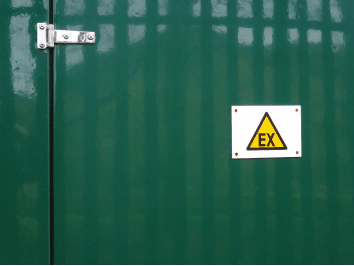Explosive atmospheres hazard zones in the workplace have to be clearly marked in accordance with The Dangerous Substance and Explosive Atmospheres Regulations 2002 (DSEAR), with the aim to eliminate or control such risks from flammable gases, vapours or combustible dust being ignited on mixing with air. These are the implementation of the EU’s ATEX Regulations, both the Workplace Directive (99/92/EC) and the Equipment Directive for electrical and mechanical tools (94/9/EC).
Label Source has a range of health and safety to identify areas of potential risk from gas or dust release, with the use of correct equipment (including equipment labels), in hazard zones ranging from Zone 0 to Zone 2 (for gases), and Zone 20 to Zone 22 (for dust), and for related equipment for safe operation in the zones.

There are a range of potential sources of ignition such as sparks (either electrical or mechanically generated), electrostatic discharge, high surface temperatures, ionising radiation, naked flames, electrical networks, radio frequency or electromagnetic waves, ultrasound, lightning or adiabatic atmosphere compression).
Our signs are used in a wide spectrum of customers involved in manufacture, storage, transportation, recycling or use of paint, varnishes, flammable gases (such as acetylene), methane at landfill sites, petrol, LPG, chemicals, resins, solvents and plastics, or particles from wood, coal, grain, flour, animal feeds, coatings or powders.
For ATEX applications our ranges include signs for no smoking and no naked flame prohibition safety, hazard warning (including EX signs), electrical safety, electrostatic discharge, chemical warning, and use of personal protective equipment.